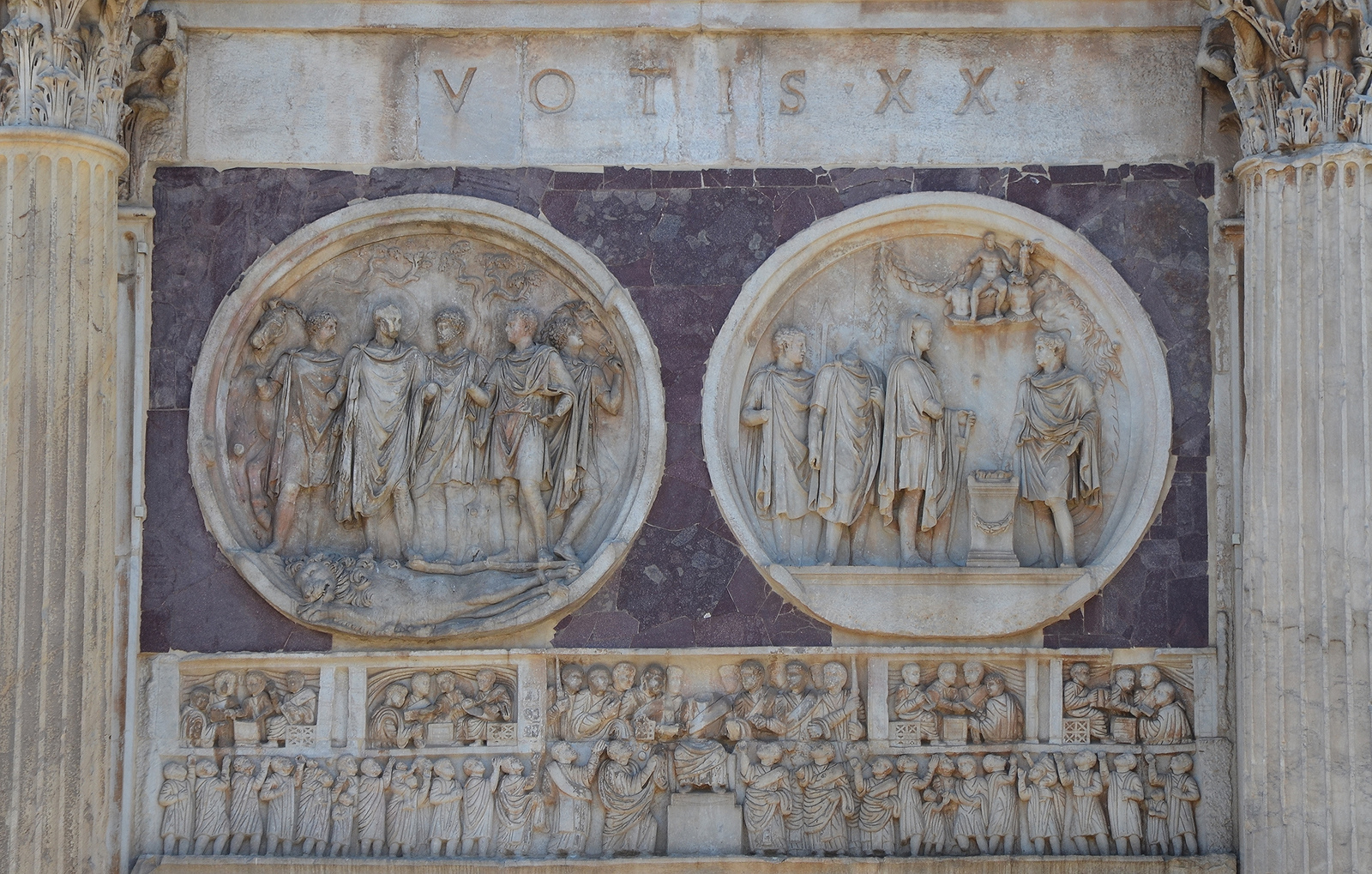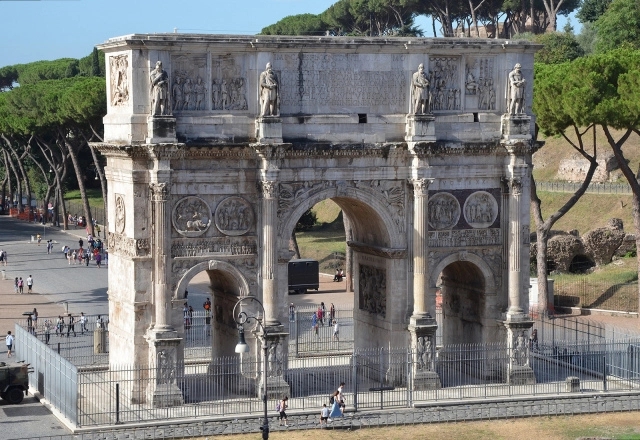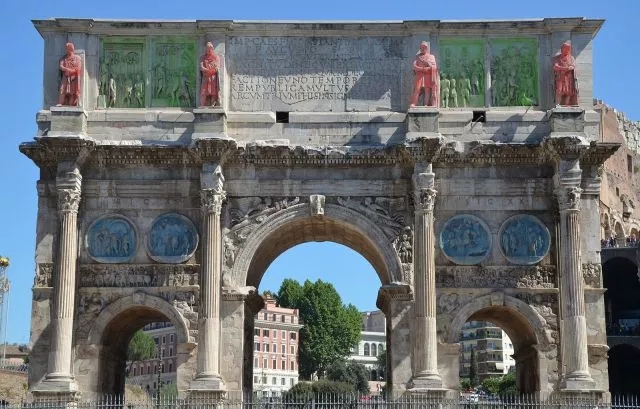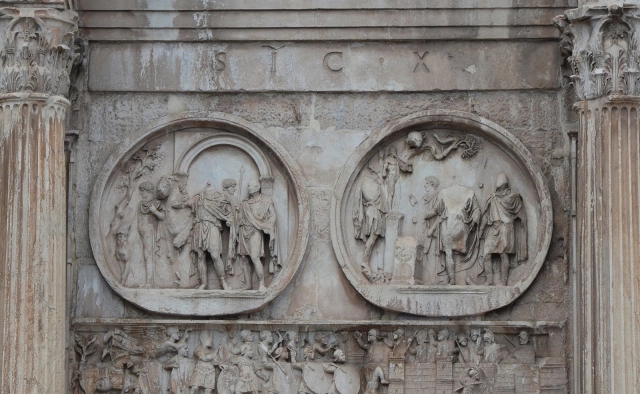DepthReading
The Hadrianic Tondi on the Arch of Constantine
The Arch of Constantine, dedicated on 25 July 315 CE, stands in Romebetween the Colosseum and the Palatine Hill, at what was once the beginning of the Via Triumphalis. As described on its attic inscription, it commemorates Constantine’s victory at the Battle of the Milvian Bridge on 28 October 312 CE over the tyrant Maxentius who had ruled Rome since 306 CE. It is one of the largest surviving Roman triumphal arches.
Standing 21m high and 25.6m wide, the arch is heavily decorated with parts of older monuments. While the monument’s structure was carved specifically for Constantine, most of its decorative sculptures and reliefs can be traced to the times of Trajan, Hadrian and Marcus Aurelius.
The statues of Dacians on top were taken from the Forum of Trajan. The relief panels between the statues were created for Marcus Aurelius. The eight roundels (tondi) were from a single monument dedicated to Hadrian.
Color coding showing spolia used in the Arch of Constantine (south side): Red: Trajan; Blue: Hadrian; Green: Marcus Aurelius. Image © Carole Raddato.
The eight large medallion reliefs (tondi) of the Hadrianic period, all in white Luna marble, decorate the north and south sides of the Arch. Their uniform circular shape of about 2.40 meters in diametre and common theme indicate that they originally belonged to a now lost monument in honour of Hadrian (possibly a tetrapylon). The tondi are arranged in pairs, two pairs on each side above the lateral archway. They depict Hadrian, Antinous and other members of the court hunting wild animals and sacrificing to four different deities.
The first pair of roundels on the south side depicts Antinous, Hadrian, an attendant and a friend of the court (amicus principis) departing for the hunt (left tondo) and sacrificing to Silvanus, the Roman god of the woods and wild (right tondo).
Tondi Adrianei on the Arch of Constantine, Southern side – left lateral, LEFT: Departure for the hunt, RIGHT: Sacrifice to Silvanus. Image © Carole Raddato.
Category: English
DepthReading
Key words:




